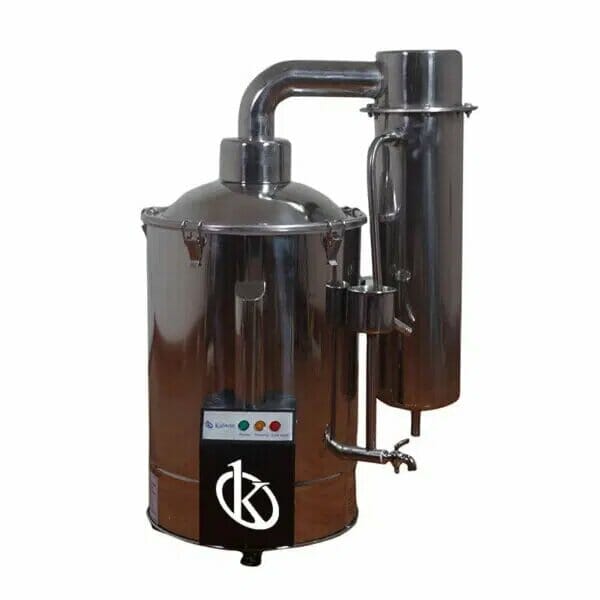In the wide world of science, laboratory water distillers are essential for maintaining a clean and safe working environment. As the name suggests, these advanced tools are used to distill water, a process of removing impurities and producing highly purified water for laboratory experiments. But just like any other device, each type of distiller has its pros and cons.
Each type of laboratory water distiller has its place within the scientific arena, and the choice of one over another depends largely on the specific needs of the laboratory. It is important to consider the amount of water required, the speed at which it is needed, the level of purity, and the resources available, both financial and spatial.
Laboratory water steam distillers
Steam laboratory water distillers work by heating the water source until it evaporates. The vapor rises and moves to a condenser where it cools to fall back down as distilled water.
Advantages: These distillers offer very high water purity, removing up to 99.9% of impurities. They are ideal for laboratories needing extremely pure water for delicate experiments.
Disadvantages: This type of distiller can be expensive in terms of energy consumption. In addition, the distillation process is relatively slow. They also require regular maintenance to prevent mineral and sediment buildup.
Reverse osmosis laboratory water distillers
Reverse osmosis water distillers work by forcing water through a semi-permeable membrane. These devices retain impurities and minerals and allow distilled water to be obtained on the other side.
Advantages: They are highly efficient and fast, capable of producing large quantities of distilled water in a short time. They are ideal for laboratories with high water consumption and short time.
Disadvantages: Although reverse osmosis distillers are excellent at their job, they can be costly to maintain in the long run due to the need for membrane replacement. In addition, they are not able to completely remove some impurities such as some pesticides and metalloids.
Laboratory water distillation water distillation by plate distillers
Plate distillers operate by applying heat to water on a series of distillation plates, with each plate reducing the amount of impurities in the water.
Advantages: These systems are compact, take up little space, and are moderate in cost. They are perfect for laboratories with limited space and tighter budgets.
Disadvantages: The plates in these distillers often require constant maintenance, and although the initial cost is moderate, operating costs can add up over time. In addition, they do not produce water of the same high purity as steam distillers.
Kalstein water distillers
Once you have considered all these variables, you can make an informed decision and equip your laboratory with the most suitable water distiller. KALSTEIN simplifies the choices by offering the best deals and quotes. Visit us HERE where you will find the different YR models of water distillers, which are available for any laboratory requirement, in addition to having the best advisors to accompany you during the purchase process.




